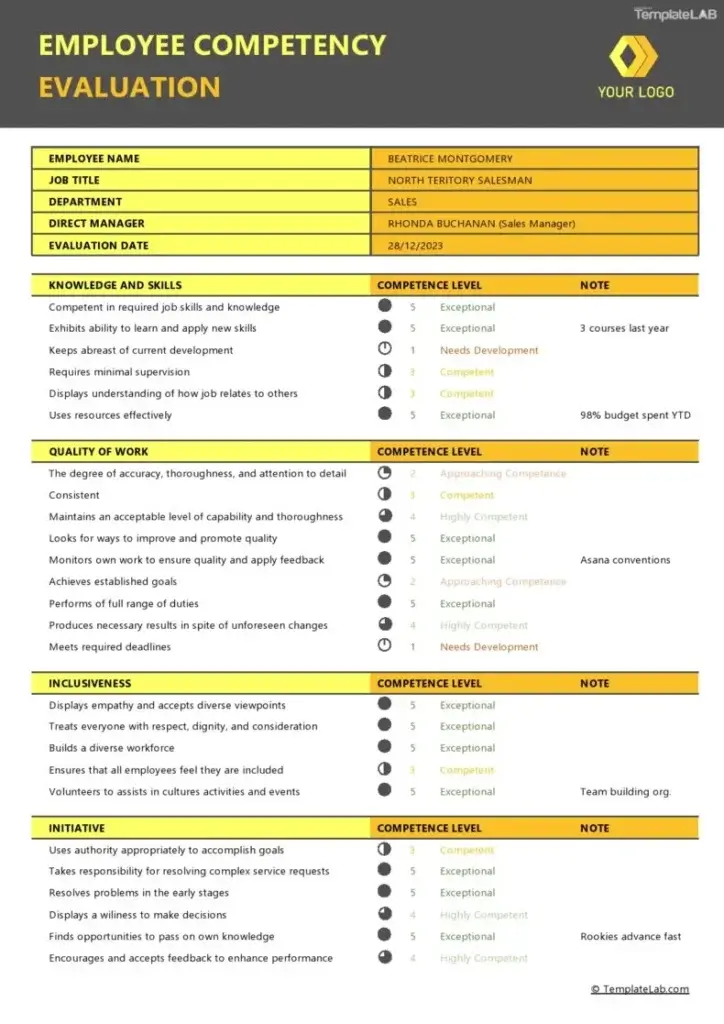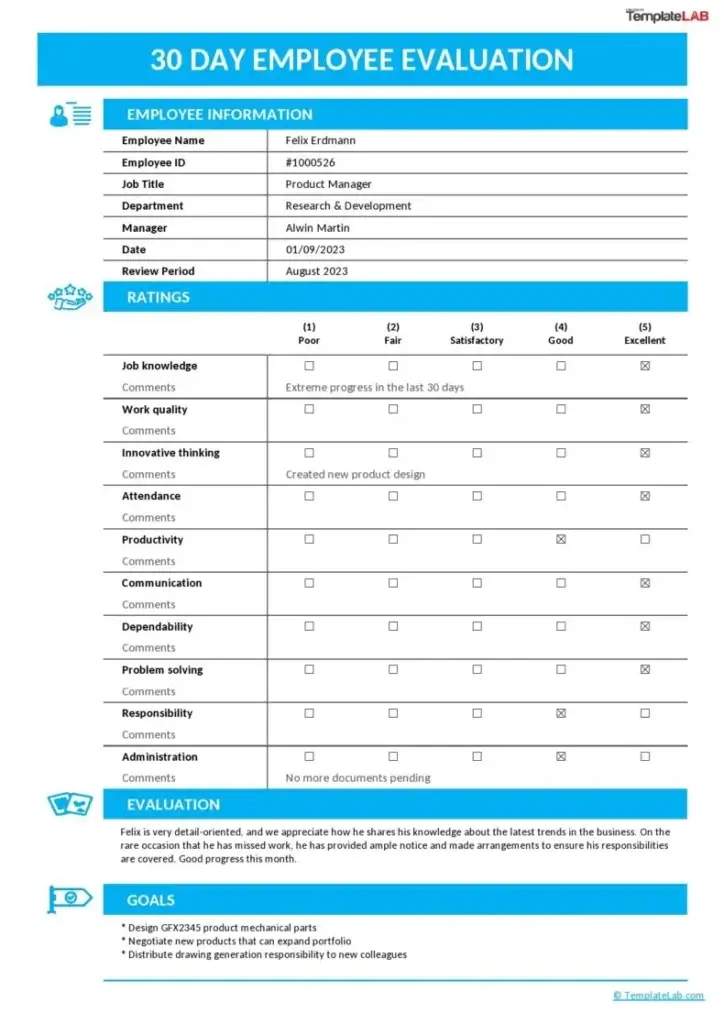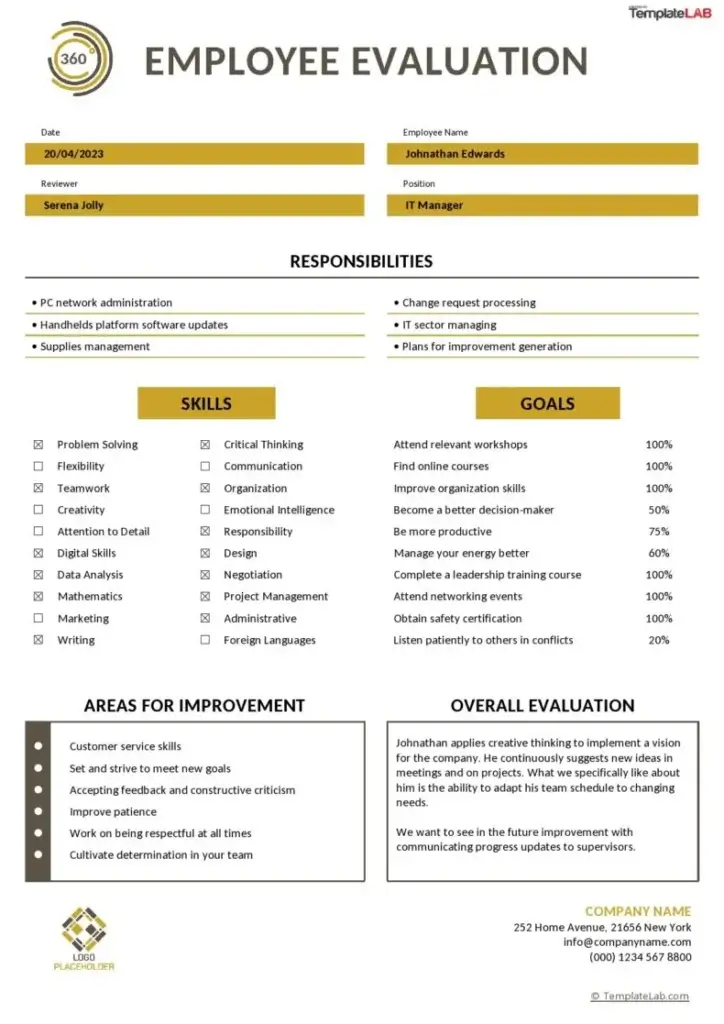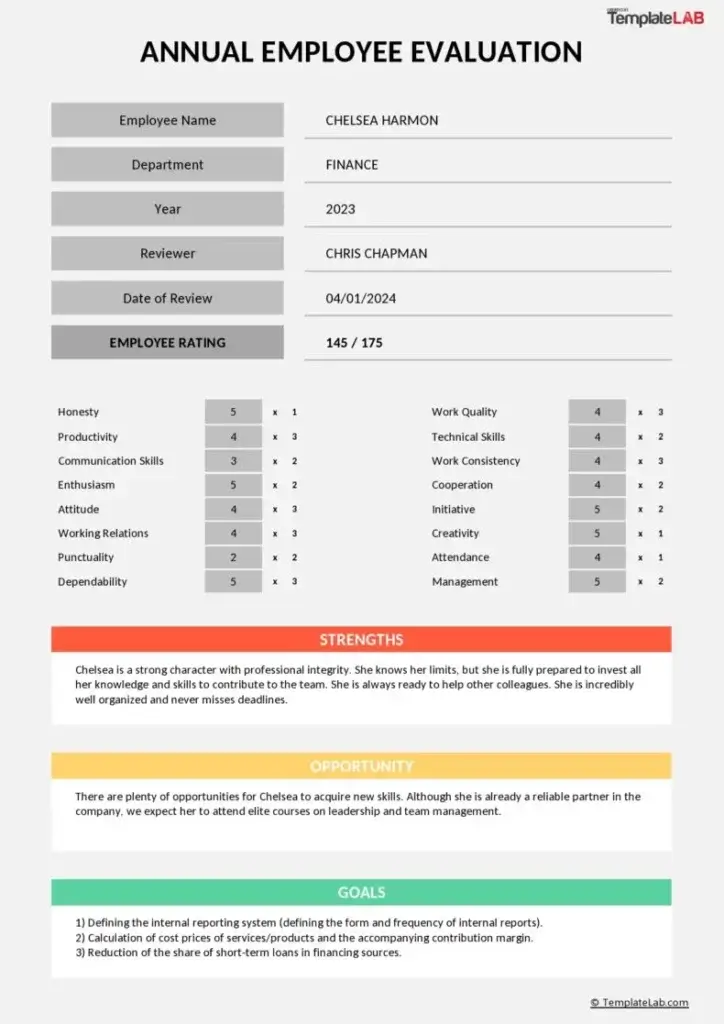What is Employee Evaluation & How to Get It Right

Employee evaluations are vital to running a successful business. They help retain top talent and identify and nurture competencies that can lead to greater success. For entrepreneurs and growing companies, evaluations offer an opportunity to assess and develop employee skills, ensuring their strengths align with business needs.
However, to make these evaluations truly effective, it’s essential to focus on the competencies that matter most and provide feedback that drives meaningful growth.
9000+ brands trust LearnWorlds to train their people, partners & customers.
Let’s explore employee evaluation in more detail by determining precisely what it refers to and then looking into some strategies for doing it correctly.
What is Employee Evaluation?
An employee evaluation, also commonly known as a ‘performance review,’ is a formal review process run by human resource departments in which a manager or supervisor assesses an employee’s work performance, skills, behaviors, and potential for growth within the organization.
It typically involves reviewing various aspects of the employee’s work, such as job performance, work ethic, productivity, key competencies (e.g., communication, problem-solving skills, time management, ability to meet deadlines, etc.), and alignment with company goals.
“The evaluation aims to provide constructive feedback, highlight strengths, identify areas for improvement, and create actionable steps for personal and professional development while also considering employee goals.”
Employee Evaluation vs. Performance Appraisal
Employee evaluations and performance appraisals are often used interchangeably, but they have distinct focuses and purposes:
Here are the key differences:
Purpose: Evaluations focus on development and growth, while appraisals focus on past performance and rewards.
Content: Evaluations assess a broad range of competencies, while appraisals zero in on job-specific metrics and outcomes.
Outcome: Evaluations provide feedback for future development, whereas appraisals often lead to immediate decisions like raises or promotions.
Performance appraisals occur once a year, and employee evaluations occur every three to six months. Some businesses, however, choose to conduct these quarterly, monthly, or even weekly and in certain circumstances, prefer to carry out more frequent check-ins or one-to-one sessions with employees.
💡OPM data confirms that frequent feedback has greater results in improving employee performance and achieving performance management goals company-wide.
Key Elements of Employee Evaluation
An employee evaluation is not just a routine assessment but rather a tool for guiding employee development and aligning their efforts with organizational goals. To be effective, an evaluation should encompass several key elements that provide a well-rounded view of an employee’s performance.
💁🏻Boost Your Business: The Critical Role of Employee Training and Development
Below are the essential components that contribute to an impactful and effective employee evaluation:
Performance Review: An assessment of how well employees have fulfilled their job responsibilities and met performance goals.
Competency Assessment: Evaluation of core skills and competencies, such as teamwork, leadership, and technical abilities.
Goal Setting: Discussions over short- and long-term career objectives, setting new goals for continued improvement and alignment with the company’s strategy.
Feedback and Communication: Constructive, two-way feedback that helps employees understand their strengths and areas for improvement.
Development Plan: A roadmap for the employee’s future growth, which may include training opportunities, mentoring, or career development.
These elements ensure that the evaluation process is comprehensive, fair, and geared towards fostering growth and improvement.
How Are Employee Evaluations Structured?
Employee evaluations are typically offered in a structured, formal setting, and the process can vary depending on the company’s size, culture, and goals.
Most companies have an engrained employee evaluation system where employees are on a regular schedule – sometimes once a year (annual review), sometimes twice.
These assessments are often used in conjunction with raises and renewals or some sort of corrective action. Sometimes, they will happen after a big project or because of a specific event in the workplace. Most often, however, they are time-based. This helps to spread out employee evaluations so you aren’t doing them all simultaneously.
💡For example, someone hired in January will have another employee evaluation in January next year. This helps to get a complete picture of how someone works and makes the process manageable.
Conducting Successful Employee Evaluations
Employee evaluations are challenging, but you can use them to your advantage if you know how to do so. Knowing how to conduct an employee evaluation is your first step.
Here are a few tips:
1Stay Prepared All Year
The first step is to be prepared for your evaluation. Keep notes all year long and stay organized. If you walk into the meeting with nothing prepared, you are just wasting time. Fill out your documents and keep detailed notes, so you won’t miss anything.
One way you can stay on top of your employee evaluations is to have your employees fill out text surveys and tests online to gauge their interests, performance, and knowledge on specific subjects. You can use this information to fill out your report before entering the meeting.
Additionally, you can leverage employee survey tools to collect meaningful information from employees. These tools allow you to get surveys on specific topics like- company-wide, leadership-only, or team-specific surveys. It’ll allow you to track changes in employee engagement levels over time and get the employee Net Promoter Score.
2Always Start with The Positives
You want to start the session out with the positives. Tell your employees what they’ve done right and what has impressed you. Keep your remarks clear and concise, but don’t be afraid of praise.
Give solid examples of your employees’ good work and even provide tools for how they can continue doing it.
3Use Online Tests & Employee Evaluations
Just as it is important to understand your customers, it’s equally critical to understand your employees. One of the best things you can do is use online tests and self-evaluations to help gauge where your employees are and how much they understand their jobs. If possible, use these to fill out and broaden the scope of your evaluations.
You can even sign them up for tests and courses (using an online course platform such as Learnworlds) that will help them perform better at work.
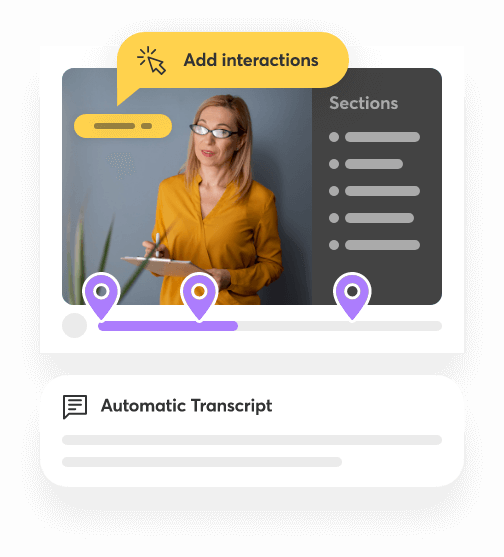
Use these as enrichment activities for times when work is slow or when employees need additional training. If you just take the time to look for them, there are plenty of opportunities for your employees to improve and provide you with some insight.
💁🏻Check these 16 best employee training methods you can use.
For example, if you figure out that a new member of your marketing team isn’t experienced in using your product, enable him to use your product by providing a tutorial and instructions to remove this roadblock.
4Talk About Areas that Need Improvement
Next, discuss where your employee has gone wrong. If you are going to give negative feedback, make sure that you have legitimate examples. Then, outline a plan for how the employee can improve. You must do some of the heavy lifting to help your employees improve.
For example, you can provide tools to improve their communication skills, suggestions for getting to work on time, or additional guidelines for improving their quality of work.
5Ask Your Employee About What They Want to Do
Keeping your employee morale up is important – so make sure you know what they want to learn. Even if you can’t teach your employees something or move them into a role right away, you can always keep that information in the back of your mind.
It’s essential to consider each employee’s strengths and wants to determine which position in the company will make them happy and then motivate them to succeed and achieve high performance.
6Ask for Feedback
Before your session ends, ask for feedback on how you are doing as well. It can be humbling to get that feedback, but you need it.
This will help your employees to tell you what they need to be successful.
For example, your employees may convey they’re overworked and under-rested, or you could figure out that being productive is challenging for them. In this case, you could provide him with suitable productivity tips and apps.
7Request Employee Self-Evaluations
Incorporating employee self-evaluations into the evaluation process enhances performance reviews by promoting self-reflection and accountability.
When employees assess their own contributions, they gain greater self-awareness, recognizing both strengths and areas for growth.
This practice encourages:
(a) An open dialogue between employees and managers
(b) More meaningful discussions
(c) Employee ownership over their development
(d) Greater engagement and commitment to the organization
💡Did you know? LearnWorlds Assessment Builder allows you to create self-assessments, empowering your employees to reflect on their own understanding and performance, fostering independent learning and growth.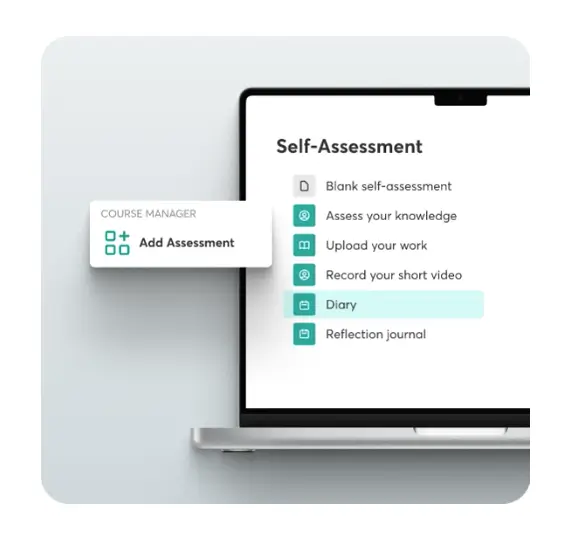
To implement self-evaluations effectively, provide clear guidelines and structured formats to focus employees on relevant aspects of their performance. Foster a work environment that encourages honesty and openness, assuring employees that self-assessments are tools for growth rather than punitive measures.
Employee self-evaluations are a valuable tool for gathering 360-degree feedback as well.
8Provide Your Employee with a Copy of Their Evaluation Form
Once you’ve completed everything from the employee evaluation and performance review process, give employees a copy. This will help them see what needs to be done in the upcoming quarter or year.
Of course, it will also help you if there is ever a time when you need to talk to them about their performance – they cannot say that they didn’t know about something in particular when you have provided documentation.
Ensure that you both agree with the decisions taken and enforce your commitment to offer your support in improving the employee’s job performance.
Be specific and mention where the employee exceeds or doesn’t meet expectations. Here are a few examples.
When the employee exceeds expectations:
(a) ‘Shows strong judgment and relies on data-driven decision-making.’
(b) ‘Demonstrates a keen attention to detail and produces excellent work.’
(c) ‘Consistently sees projects through to completion and meets deadlines.’
When the employee doesn’t meet the expectations:
(a) ‘Tends to make impulsive decisions grounded in false assumptions.’
(b) ‘Delivers work with an unacceptable number of errors.’
(c) ‘Needs improvement of planning skills to ensure timely completion of tasks.’
To better understand how employee evaluations work, let’s go one step further, exploring different case scenarios.
So, let’s break down your employees into three different groups:
The Good
The good worker is someone who goes above and beyond at work. He or she spends extra time to ensure that their work is correct, on time and done to the standards you’ve set. This is a person who, when they make mistakes, learns from them and doesn’t make those same mistakes again.
Your employee evaluation process of this person should focus on what they do right – don’t nitpick and look for what they do wrong. Tell them you appreciate them and love the work they are doing. During this time, focus on what they say about your work involvement, too.
For example, maybe they want to take over the social media posting, and you do it but don’t like it – so you can shift it to them.
The Bad
Let’s say you have a mediocre employee but nothing outstanding. This person does the work they are supposed to but doesn’t go above and beyond the call of duty. Maybe they make mistakes a few times until they learn from them—or perhaps they try to work too quickly and produce sloppy work.
During this evaluation, you should focus on potential areas for improvement and provide constructive criticism. Tell them you think they have potential and ask them to work to achieve it—for example, they can work on their decision-making skills.
The Ugly
Not all employees are right for your company. Maybe you have some lazy employees, but you still see some positives in them. Say someone is really great in a specific area but doesn’t show up on time and has a bad attitude. The core skills are what is important.
Try to focus your employee evaluation on what can be improved and what value this person brings – but make sure they understand what mistakes they are making and that you do notice those mistakes.
If you still aren’t sure about your employee and you want to learn more, there are some great questions you can ask to dig a bit deeper and find out more. If you aren’t a good communicator, this can be a problem.
Here are some excellent question examples you can employ to unearth an employee’s potential:
What was your greatest accomplishment in the last year?
What have you seen as your worst failure this last year?
What do you see yourself doing in a year?
Is there a position in this company that you aspire to obtain?
What skills do you want to learn at your job?
What areas do you think you need to improve upon?
Do you feel that you are a good team member?
What drives success in our company?
What is a detriment to success in our company?
What areas of our company need improvement?
What scaffolding can we provide you for success?
Do you feel that you help other employees?
Do you have everything that you need to perform?
What would help your overall performance?
How has management helped your work?
How has management hindered your work?
Do you have any questions about your overall performance?
Aside from questions, there are a few practices you can try out to boost the effectiveness of your employee evaluation process. Read on to learn how to apply these to remote work settings.
When you are doing an employee evaluation for remote work, it can feel a bit distanced or disconnected. However, there are some things you can do to help make it work:
1Use video
While there is a temptation to use a phone call for your employee evaluation, it helps when you can read body language. There are plenty of video interviewing tools from which you can choose. However, I highly recommend testing any tool before setting up calls with employees to ensure everything goes smoothly.
2Send copies of the evaluation
Since you cannot hand a copy of the employee review over to the person, send over the evaluation. You may even want to create a document that you can share.
3Ask to record the meeting.
If you want to be present in your evaluation, ask to record it. This will help you to get more value out of your time without taking you out of the moment.
4Don’t plan a meeting right after
Your employee evaluation may take 10 minutes or an hour. You do not want to cut off your employees. Try not to have a hard stopping time so they don’t feel slighted. Try to prioritize their needs during this time without worrying about how long the meeting lasts.
5Set clear goals and KPIs
With remote work, in particular, you want to set goals (preferably SMART goals) for your evaluation. This will allow you to reason through them much better than you can in email.
💁🏻You can learn more about goal setting and its benefits here.
Still unsure what you want to do for your employee evaluation? Don’t worry—we’ve got you covered. Many employee evaluation templates are currently available online, and you can also get them for free.
Simply select your preferred type, style, and format, such as numerical rating scales or behavioral or competency-based assessments, and you’re good to go.
Here are a few examples from TemplateLab to help you get started.
Example 1: Employee Competency Evaluation Form
This is a detailed, competency-based evaluation with a five-point competence scale. It focuses on knowledge, skills, and quality of work and includes notes and goal-setting sections.
Why it works: It differentiates between levels of competence in specific areas, providing granular insights into development needs and strengths.
Best for: Ideal for roles requiring skill-based assessments, such as sales or technical positions, where competency in specific areas directly impacts performance.
Example 2: 30-Day Employee Evaluation Form
This form can be used for monthly evaluations. It has a five-point rating scale for specific competencies like job knowledge, work quality, and innovation. It also allows the addition of comments and goals.
Why it works: It is quick to fill out and ideal for assessing 30-day-long progress. Comments allow for qualitative feedback in addition to numerical ratings.
Best for: Designed for probationary or early-stage evaluations, such as new hires or employees transitioning to new roles, to assess immediate impact and progress.
Example 3: 360 Degree Employee Evaluation Form
Here’s a competency-based form that evaluates a wide range of skills, from problem-solving to communication, with checkboxes for different areas of responsibility and skill levels.
Why it works: It’s broad in scope, covering various dimensions of an employee’s role from different perspectives, making it suitable for gathering feedback from peers, subordinates, and managers.
Best for: Ideal for managers or senior employees where holistic feedback from multiple sources is valuable. It can also be used for leadership roles or roles with high collaboration demands.
Example 4: Annual Employee Evaluation Form
This is a detailed, structured form with numerical ratings for various competencies (e.g., honesty, productivity, work quality). It includes sections for strengths, opportunities, and goals.
Why it works: It’s comprehensive, giving a well-rounded view of the employee’s performance, strengths, and areas of improvement. The use of weighted scores makes it easy to quantify overall performance.
Best for: It is well-suited for annual reviews where long-term performance needs to be measured, and developmental goals should be set for the upcoming year.
Employee evaluations present unique opportunities to enhance your company culture and drive progress. By focusing on detailed, real-time feedback, you can streamline the evaluation process and create a more positive work environment, all by ensuring employee satisfaction and boosting retention.
These evaluations support individual growth and can help you pave the way for your organization’s overall success. Embrace this chance to foster development and innovation, ensuring a brighter future for both your employees and your company.
———————————————
Are you looking for a solution to offer remote employee training? LearnWorlds is a cloud-based learning platform that enables companies to provide training from their own website. Try LearnWorlds with a 30-day free trial today.
9000+ brands trust LearnWorlds to train their people, partners & customers.
(Visited 1,969 times, 1 visits today)

Max Benz
Max Benz is head of content at Filestage (https://filestage.io) and thinks that solid employee evaluation is crucial for every company. On the side, he’s running a German remote job board.
